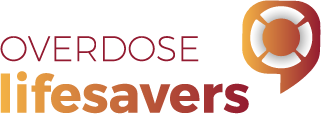I’ve been sick with immunological diseases, or disease, for a long time, since about year ten, and that has meant that I’ve experienced varying levels of pain over the years. And I was never really … I guess I was never really worried about opioids. I’d used them in the past, but recently I’ve had a couple of surgeries, like, I’m talking in the last four years, couple of surgeries that required some pretty serious sort of post-operative, in-hospital pain relief.
[…]
And I think about overdose, like accidental overdose, more than anything I’m using very measured, you know, pharmaceutical grade Endone, but I use it in conjunction with sleeping tablets and things, so I’ve never really asked anyone, like “how much of this is safe?”. And I’m sure the response I’d get, you know, from people in the medical fraternity, is “just take what your doctor tells you to take and you’ll be cool”. So I religiously do, but, you know, I’m sure there’s nights that I go out and I might have a couple of beers and a couple lines of coke or something and then I’m like … I’m still taking what the doctor tells me to take … but I’m sure I wouldn’t be the first person to take [what you] were supposed to take and have some sort of accident. So that’s sitting in the back of my mind, you know what I mean?
[…]
And if I was to have an accidental overdose, the ramifications for the people I know, family, like, it would, yeah, it would destroy people, you know.
[…]
So yes, there would be an absolute argument for me to have a Narcan pen in the cupboard, like someone would have an EpiPen for anaphylaxis. That argument would be that it wouldn’t matter how much someone seems like they’ve got it together on the surface. To my friends, family and work, I’m cruising along pretty well. I’ve got a job, steady income, wife, family, but here I am having this interview and it’s pretty crystal clear that I’m, as well as all those things, at risk of overdose. And if there was Narcan at home and I could bring the people closest to me up to speed, then that would certainly perhaps save my life.


